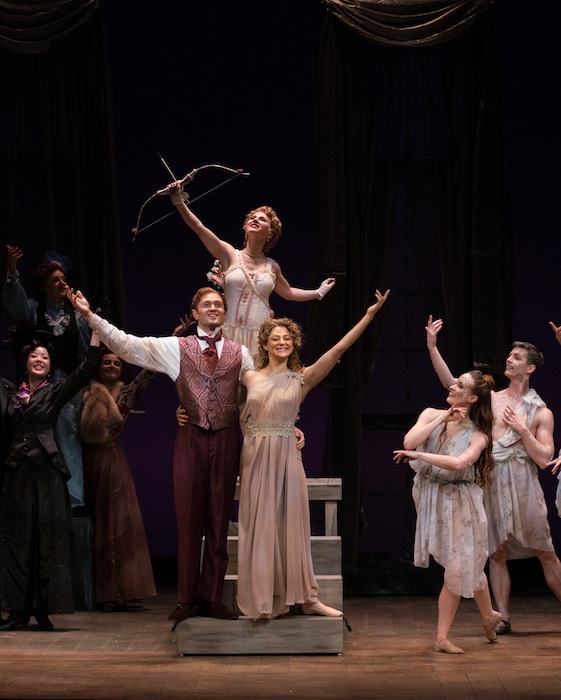NYCO’s rocky “Pygmalion” double-bill comes to life in second half

Thor Arbjornsson, Samarie Alicea and Melanie Long (above) in Rameau’s “Pigmalion” at New York City Opera. Photo: Sarah Shatz
When going to see a double bill, one usually expects to see two different stories on stage. Yet New York City Opera served up a pair of one-act operas on Pygmalion by Donizetti and Rameau Saturday at John Jay College’s Gerald W. Lynch Theater. The novelty of seeing contrasting treatments of the same Greek myth in such disparate styles might have held some appeal, had this not turned out to be one of NYCO’s least polished performances since their reboot.
In his pre-curtain speech, company general director Michael Capasso boasted that Saturday’s listeners would be the first American audience ever to hear Donizetti’s Il Pigmalione. It’s not hard to tell why. The brief one-act was written when Donizetti was just nineteen, and indeed it reads more like a juvenile study than a piece meant for a public audience.
The work is in essence an extended monologue for the tenor playing Pigmalione, and offers only the barest bones of the myth. After nearly an hour of observing (or imagining) faint signs of life in the woman he has sculpted, his dream finally comes true, as the statue comes to life as Galatea, a soprano with a scant handful of lines to sing. Pigmalione’s vocal part does feature some impressive effects, and offers hints of Donizetti’s lyrical talent, but so much of it is formulaic or downright repetitive that it’s hard to really enjoy for long.
Stage director Richard Stafford has provided a rudimentary modern staging; the most interesting thing in the entire mounting of the piece is the statue, a faceless, abstract nude but still curvaceous, sensuous.
One of the problems of presenting obscure works like this is that there aren’t a lot of singers familiar with the parts to choose from. The young tenor Piotr Buszewski was fairly solid, though his pitch often strayed flat and his tone had a nasal quality to it. Jessica Sandidge’s soprano showed a hard edge in her brief appearance as the animated statue Galatea.
The pit was especially unconvincing–the chamber orchestra of NYCO players under Gil Rose sounded anemic to begin, and only grew less secure. Intonation was poor, the players hardly seemed comfortable with their parts, and there was little variation in color or energy.
They fared somewhat better in Rameau’s more substantial Pigmalion, finding a litheness of sound even if their intonation was still shaky. Something similar might be said about the piece as a whole: NYCO’s usual polish was still missing, but the entire presentation was livelier and more graceful.
A major contributor in that regard is Stafford’s much more playful staging, which is faithful to the work’s conception as an opera-ballet by rooting the scene in dance. Stafford opens the scene on a kind of Victorian parlor, in which guests mill about admiring the host’s sculptures; they freeze as the statues–portrayed by the dance corps–spring to life. As the scene progresses and Cupid contrives to bring Pigmalion and the Statue together, we see a sort of union of two parallel universes: one in which humans move about in their ordinary lives, and one in which works of art spring on each step, themselves embodying music and dance.
In this incarnation of the title role, Thor Arbjornsson sang admirably, showing a creamy if slightly tight tenor and, for the most part, navigating the tricky coloratura passages with flair. Melanie Long brought a spry energy to the role of Cupid, but showed a pronounced wobble anywhere above her midpoint.
As Pigmalion’s poor forgotten flame Céphise, Julia Snowden offered a mezzo-soprano of appealing darkness. The best singing of the afternoon came from soprano Samarie Alicea as the Statue (as she’s called in this version), who boasted a lively, warm voice and bore herself with athletic grace.
Il Pigmalione and Pigmalion will be repeated 4 p.m. Sunday at the Gerald W. Lynch Theater. nycopera.com